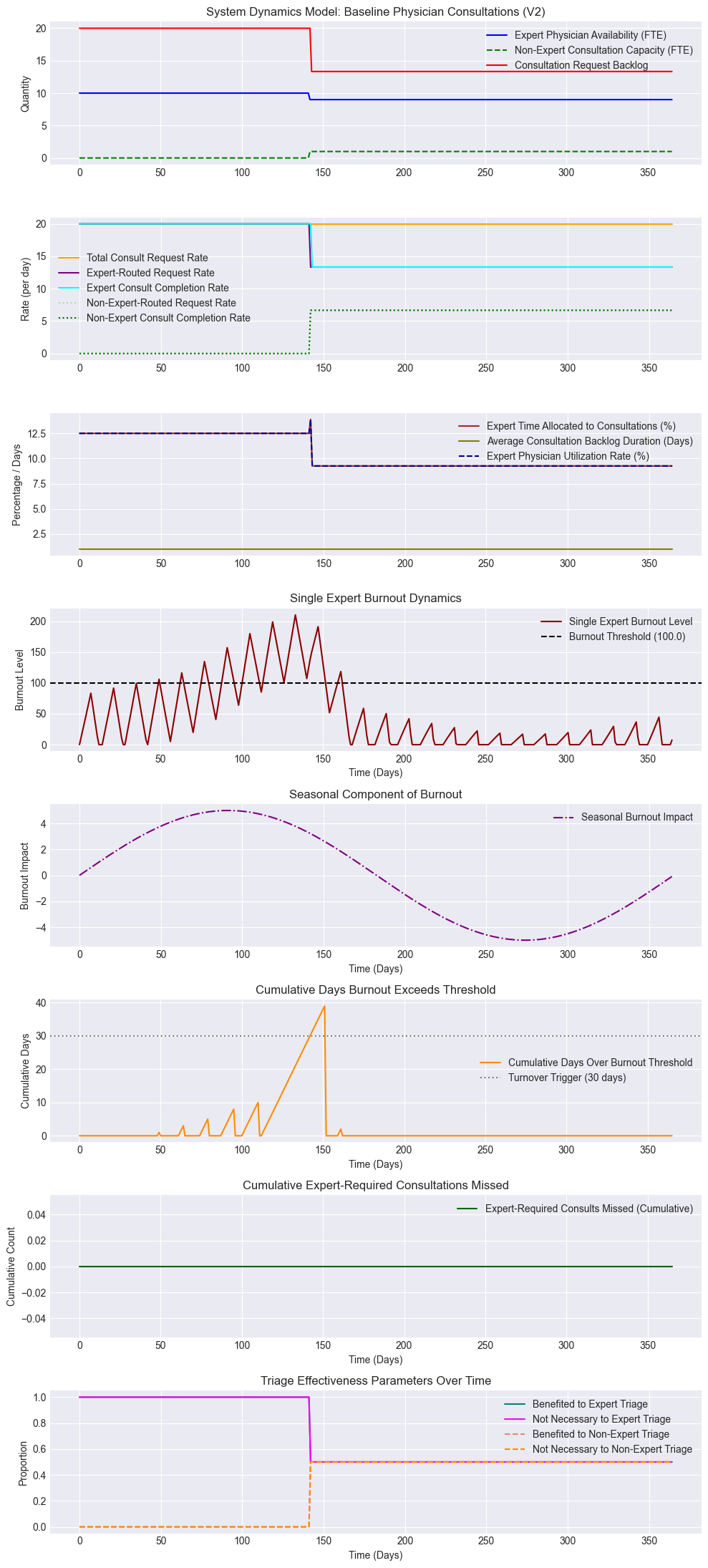In today’s complex healthcare landscape, hospitals face the persistent challenge of balancing patient demand with the optimal allocation of highly specialized medical talent.
A critical area of concern often overlooked is the inefficient utilization of expert physicians for consultations.
This issue not only strains valuable resources but also significantly impacts physician well-being and, ultimately, patient care quality.
At Front Analytics, we specialize in precision forecasting for complex environments. Our mission is to equip decision-makers with the tools they need to anticipate outcomes, adapt strategies, and drive positive impact. Request a Demo
The Challenge: Expertise Misalignment and Its Consequences
Our analysis reveals a common scenario: highly specialized physicians are frequently engaged in consultations that do not necessitate their advanced expertise. While seemingly benign, this practice precipitates a cascade of detrimental effects:
Increased Physician Burden and Burnout
When expert doctors are routinely diverted from complex, high-value tasks to address more routine inquiries, their workload becomes fragmented and less professionally fulfilling. This contributes significantly to heightened stress levels and the pervasive issue of physician burnout, which can lead to costly staff turnover.
Compromised Patient Flow and Delayed Care
The preoccupation of experts with non-essential consultations can create bottlenecks, delaying their availability for patients who genuinely require their specialized intervention. This directly impacts patient wait times and may compromise the timeliness of critical diagnoses and treatments.
Suboptimal Resource Deployment
The misapplication of highly compensated expert time to tasks that could be competently handled by other qualified professionals represents a significant opportunity cost and an inefficient use of institutional resources.
The Solution: A System Dynamics Modeling Approach
To effectively address this multifaceted challenge, a holistic and dynamic analytical framework is essential. Our system dynamics model serves precisely this purpose, functioning as a sophisticated “flight simulator” for hospital operations. This approach allows healthcare leaders to:
A preview:

Gain Comprehensive Insight
Unlike traditional analyses that might focus on isolated symptoms, our model illuminates the intricate web of interdependencies between physician workload, consultation demand, staff capacity (both expert and non-expert), physician burnout, and even seasonal variations. It provides a clear, data-driven understanding of the underlying systemic behaviors.
Identify Leverage Points for Intervention
By mapping these complex relationships, the model helps pinpoint the most impactful areas for strategic intervention. This moves beyond merely reacting to problems, enabling proactive, evidence-based decision-making.
Simulate and Evaluate Policy Options
Before committing significant resources to new initiatives, the model allows for the virtual testing of various policy scenarios. For instance, we can simulate the impact of:
-
Enhanced Triage Protocols
How effectively can we re-route less complex consultations to non-expert staff? -
Investment in Non-Expert Training
What is the long-term benefit of expanding the capacity of advanced practice providers or physician assistants to manage specific consultation types? -
Dynamic Staffing Adjustments
How do changes in expert or non-expert availability affect the entire system?
Quantify Strategic Benefits
The model provides measurable insights into key performance indicators, including:
-
Reduced Physician Burnout
Tracking individual burnout levels and the cumulative duration above critical thresholds helps assess the impact on physician well-being and retention. -
Optimized Resource Allocation
Understanding expert and non-expert utilization rates allows for more efficient deployment of personnel. -
Improved Patient Flow
Monitoring consultation backlogs and average wait times directly reflects enhancements in patient access to care. -
Mitigation of Missed Critical Consults
The model quantifies instances where expert-required consultations may not receive the necessary specialized attention, highlighting potential risks to patient safety and quality.
Conclusion
In an environment where every resource counts, optimizing the utilization of expert physicians is not merely an operational goal; it is a strategic imperative for hospital sustainability and the delivery of superior patient care.
By leveraging the power of system dynamics modeling, healthcare organizations can gain unparalleled foresight, test interventions with confidence, and ultimately foster a more efficient, resilient, and physician-friendly operational ecosystem.
To explore how a customized system dynamics solution can benefit your institution, please contact our consulting team.

